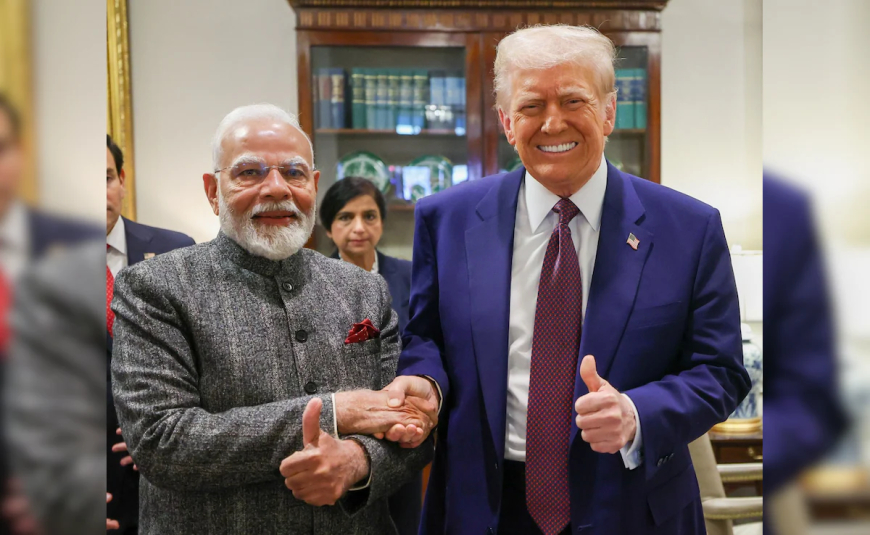India–US Trade Talks Gain Momentum: New Agreements Could Reshape Agricultural Exports
India–US trade talks intensify with focus on agricultural exports, digital trade, and market access. Agreements with Chile and Peru also progressing to reshape India's global trade footprint.

New Delhi – Trade negotiations between India and the United States have entered a critical phase, with senior officials confirming that discussions now extend beyond tariff concessions to structural reforms and expanded market access for Indian agricultural exports. According to India’s chief trade negotiator, the ongoing talks could have a transformative impact on India’s export profile, not only with the US but also with Latin American nations like Chile and Peru.
The renewed push for bilateral and regional trade agreements comes at a time when India is working to recalibrate its foreign trade policy to reduce reliance on traditional markets and diversify its export basket.
India–US Trade Negotiations: What’s on the Table?
India and the United States have long-standing trade relations, but a formal Free Trade Agreement (FTA) has remained elusive. Over the past six months, however, negotiations have intensified with a focus on:
-
Tariff reductions on key Indian exports including basmati rice, marine products, and spices
-
Easing of non-tariff barriers such as stringent phytosanitary standards on Indian agricultural goods
-
Expanded access for US agricultural and dairy products into Indian markets
-
Digital trade and cross-border data flow norms
-
Intellectual property protections and service sector commitments
Speaking at an industry roundtable on July 10, India’s lead negotiator, Mr. Suresh Prabhat, stated:
“We are now entering the most substantive round of talks. If agreed upon, these new frameworks could significantly alter our agricultural export map while ensuring fair reciprocal access for US producers.”
Agricultural Sector in Focus
One of the major thrust areas of the current negotiation round is agriculture, where India sees both opportunity and caution. Indian exporters are seeking lower duties and clearer quality certification norms for products like:
-
Basmati rice
-
Pomegranates and mangoes
-
Marine exports such as shrimp and tuna
-
Organic spices and herbal products
In return, US negotiators have pushed for greater access for American almonds, apples, and dairy products, which has drawn resistance from some Indian farmer associations.
Still, trade experts believe a balanced agreement could help India expand into non-traditional markets, while aligning domestic agri-processing with international standards.
According to a report by the Federation of Indian Export Organisations (FIEO), India’s agri-exports to the US stood at $4.3 billion in FY24, and this could increase by 25–30% if market access restrictions are eased.
Why Latin America Matters: Chile and Peru Talks Progressing
In a parallel effort, India is also negotiating preferential trade agreements with Chile and Peru, both of which are part of Latin America’s Pacific Alliance and offer untapped markets for Indian pharmaceuticals, textiles, and processed foods.
India already has a Partial Scope Agreement (PSA) with Chile, signed in 2017, but officials are working to expand it into a broader bilateral trade deal covering a larger set of goods and services.
The Ministry of Commerce confirmed that a draft agreement with Peru is also nearing finalization. If ratified, it could provide duty-free access for over 4,500 product lines, significantly boosting India’s exports to South America.
“Latin America is the next frontier. These partnerships help us counterbalance our dependence on Europe and Asia,” said a senior official from the Directorate General of Foreign Trade (DGFT).
Key Challenges in Negotiations
While the prospects are promising, challenges remain:
-
Regulatory alignment: India and the US differ on several regulatory frameworks, particularly in the food safety and pharmaceutical sectors.
-
Agricultural subsidies: The US has raised concerns over India’s farm support programs, which it argues create trade distortions.
-
Digital data sovereignty: India’s data localization policies are at odds with the US position advocating for open cross-border data flows.
-
Labor and environmental clauses: Some proposed clauses could require changes to India’s domestic regulatory architecture.
Negotiators are reportedly seeking middle-ground solutions, especially around digital policy and subsidies, to ensure that a deal can move forward without compromising on national interests.
Industry Reactions and Business Impact
Indian exporters, particularly in the textile, pharma, agriculture, and auto-component sectors, have welcomed the move, urging swift implementation.
According to Ajay Sahai, Director General of FIEO:
“A well-balanced trade agreement with the US can open up significant opportunities, not just for big exporters but also for Indian MSMEs looking to enter global value chains.”
The Confederation of Indian Industry (CII) has suggested setting up a joint dispute-resolution mechanism to manage trade frictions and ensure smoother execution post-agreement.
The Geopolitical Angle
The push for deeper trade ties also reflects growing strategic alignment between India and the US, particularly amid global realignments post-pandemic and in response to China’s growing economic assertiveness.
Trade analysts argue that these deals are part of India’s broader “Look West and South” strategy, aiming to build resilient supply chains and diversify trade beyond Asia-Pacific.
Conclusion: A Turning Point for India’s Trade Diplomacy
The outcome of these negotiations could shape the future of India’s external trade in the decade ahead. With strategic outreach to Latin America and a potential breakthrough with the US, India is looking to reposition itself as a global trading power with modernized export ecosystems.
If agreements are finalized this fiscal year, the benefits could begin materializing by mid-2026, enhancing GDP growth, employment in export sectors, and India’s credibility as a reliable global trade partner.











